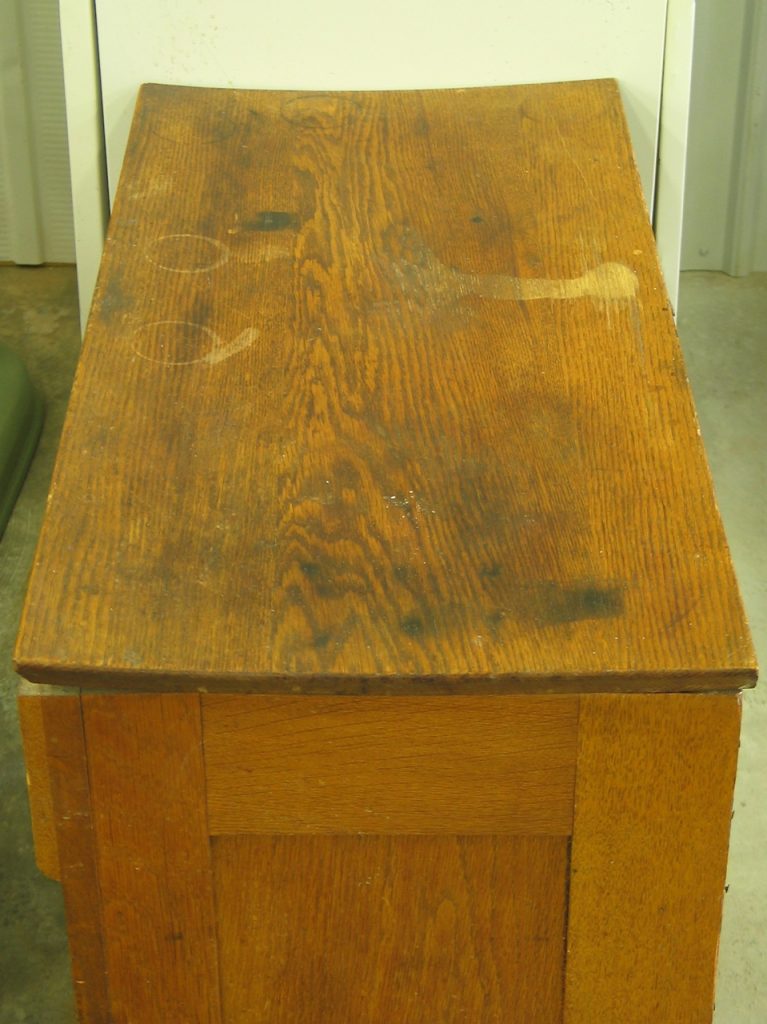We may receive a commission when you use our affiliate links. However, this does not impact our recommendations.

Water damage to the top of this chest caused it to shrink in width and cup due to compression shrinkage.
Here’s a question that comes up often. I just got it again from a reader. Is it necessary to finish both sides of tabletops to prevent warping?
You can do this if you want; it doesn’t hurt anything. But it doesn’t make warping (cupping or bowing) any less likely either, which is probably the reason you think you need to do it. Finishes slow moisture exchange, but they don’t stop it. Furniture finished before the 1920s was rarely finished
on both sides. You can check this out yourself in an antique store. If tops are warped, they are almost always cupped (instead of bowed from drier
conditions in modern buildings). The cause is almost always water getting through the finish and into the wood and causing compression shrinkage. Finishing the bottom side wouldn’t have prevented this.
The myth of the necessity to finish both sides probably comes from the warping (cupping) that occurs from using a water-based glue to apply veneer.
The glue causes the veneer to swell, and when it dries it shrinks. This pulls the panel into cupping, unless you also apply the veneer to the bottom side using the water-based glue. (Solvent-based contact cement doesn’t do this, though I don’t like using contact cement to apply veneer.)
So woodworkers, most of whom use water-based glues, learned that they needed to veneer both sides. Then this procedure got applied to finishing, and many now think that both sides also need to be finished.
Beginning around the 1930s, after spray guns and lacquers became available, factories began finishing the undersides of tabletops, especially from the rails outwards (still rarely between the rails) to make the wood feel better when people touched it, and look better if people crawled underneath.
Here are some supplies and tools we find essential in our everyday work around the shop. We may receive a commission from sales referred by our links; however, we have carefully selected these products for their usefulness and quality.






![How to Build a Modern Kitchen Island [Video]](https://dev.popularwoodworking.com/wp-content/uploads/bfi_thumb/dummy-transparent-olcy6s63it1p9yp7uhusjas7c8kahafrhg9su7q9i0.png)

